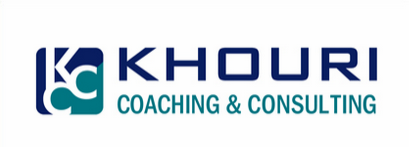"Reorganization" seems to be very popular these days as companies downsize and focus on maximizing efficiency. As staff size shrinks and more work falls to a smaller number of people, it is more critical than ever to ensure you have the right people and the right structure in place. Without this, greater efficiency is unlikely to be achieved and the creation of an efficient and effective organization becomes near impossible. Some things to consider when getting the right organization in place are: function, people, stakeholders, effective communication, and flexibility.
1. Function is a great place to start, but don't get stuck on it. At the most basic level you need to identify which functions need to be staffed. Some approaches to consider are:
- A functional organization organized around Architecture, Development, Testing, Implementation, Support.
- A customer-focused organization organized around specific customer groups
- A project organization organized around key projects
Or some hybrid of the above.
To decide which is the best approach for your organization, make sure you are aligning the functional structure with the organization's goals and business goals. If you are not sure what the organization's goals are, stop reading, and make determining these goals the highest priority with your team. If your top goals are around delivering key projects, organize around projects. If your top goals are around improving customer satisfaction, there's your answer. If you need to improve overall delivery, perhaps a functional organization is the right way to go. Once you have aligned the basic functional set up of your organization with your goals, draw out a sample organizational chart or two. You will start to see the pieces falling into place.
2. It's all about the people. Jim Collins reminds us, "first who, then what. First who, then what." It's important to make sure the right people are in the right roles on your management team and across the organization. To do this:
- Play to people's strengths and stretches. For example, you may have a very solid software development manager (strength) who has not taken a leadership role on a new product initiative before (stretch).
- Look internally first. It is always better to leverage the people you have when you can. Hopefully, you have done some work already to grow associates so they will be ready. This is a positive message for the entire team.
- Take the opportunity to put good people in the right roles in your organization, and when possible find the right roles outside the organization for those individuals that may no longer fit.
- Don't assume people want more responsibility.
- Ensure leaders have the respect of others.
Allow yourself to structure around the good people you have identified even if it means modifying the structure you created in step 1.
3. Test it out. This is a critical step. It is important to get some feedback from each of the following groups of people: The key players and influencers on your team (start here to ensure the basic structure and people will work well with the team, and that the structure makes sense overall), your HR support team / person, your boss, your peers, and your business partners. As part of this process, you need to be clear about confidentiality both to encourage honest and direct feedback and to convey that the new structure is not yet ready for broad or public communication. Finally, make adjustments based on the feedback you receive.
4. Spread the word. Now it is time to identify all of the people that need to know about the changes and go on a road show. Communication is key and making sure everyone knows and understands the change is important to obtaining their buy in and ultimately their support of the new structure. Put a short presentation together describing the process you went through, key organizational goals, objectives of the re-organization effort, and verbalize why you chose the people you did. Finally, describe the key entry points into the organization so that everyone is clear where to go and for what purposes.
5. Be Flexible. Ok, now that you have figured it all out, tested it with great feedback, communicated it, you still have to leave yourself some room for adjustment. No matter how much you plan and think ahead, there will be some things that do not work quite right. Do not be afraid to fix it, re-communicate, and move forward. Don't think you have to stick to your original plan forever. I love the words of George S. Patton, "a good plan today is better than a perfect plan tomorrow." The factors above represent only a subset of those that you may consider when reorganizing a technology group, however I hope they provide a good framework to help shape your thinking.
Don's Coaching Questions:
- How well aligned is your organization with your organizational goals?
- As you look around the organization, do you have the right people in the right roles?
- How comfortable are you with your stakeholder's buy-in to your organization structure.


